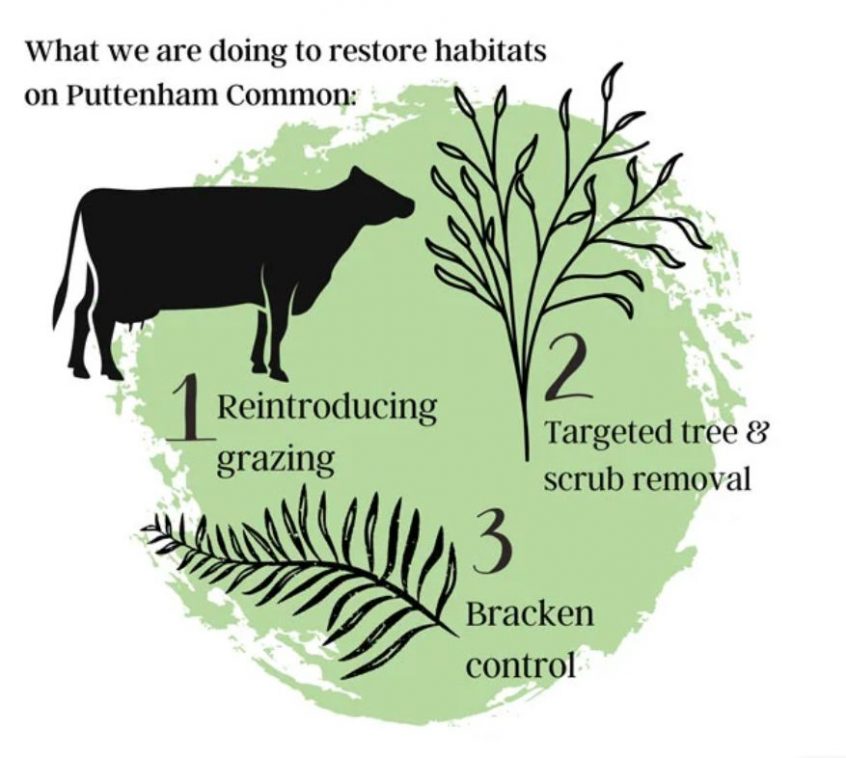Puttenham Common

Some Surrey Bird Club members may have heard about the exciting plans for Puttenham Common. which is owned and managed by Hampton Estate. In 1968 the Estate opened the common to the public. They have just created a 100-year vision to restore 180 hectares of lowland heathland, dry acid grassland, purple moor grass and rush pasture, fen, bogs, mires, lowland mixed deciduous woodland and wood pasture.
Puttenham Common’s mosaic of rare habitats makes it a very important nature hot spot. Over the last 200 years in the UK, we have lost 84% of our lowland heathland and it remains one of the UK’s most threatened habitats. Lots of rare flora and fauna depend on our lowland heathland and the other habitats that occur as part of a heathland mosaic. The abandonment of grazing on Puttenham Common since the 1940s has turned the area from a largely open landscape of heathland, grassland and wetlands into a primarily wooded site.
Their vision is:
‘To create a restored, biologically diverse heathland landscape with low-level, rotational grazing of a herd of traditional beef cattle, biologically-rich restored wetlands (with the aim of reducing wildfires across the Common), thriving heathland species, sustainably managed public access, an active volunteer group and nature-based community’.
This will be achieved by:
Targeted tree and scrub removal – we will remove encroaching young pioneer trees and scrub in certain places to create new areas of wood pasture and to restore areas of wet and dry heathland, valley mire and bogs. We will continue to manage the precious wet Alder carr woodlands and mature oak trees to ensure these woodland habitats thrive.
Reintroducing grazing – we will be introducing 16 of Hampton’s Sussex cattle to graze areas of the common. This grazing will maintain open habitats, diversify habitat structure and create wider ecosystem benefits by providing dung for a range of invertebrate species, creating areas of poached and open ground for specialist plant species and invertebrates such as burrowing bees and wasps, and reducing excessive soil nutrient levels that suppress more delicate native plants. We will be using a NoFence grazing system, which means we mark out grazing compartments on an app and our cows wear collars that keep them in the compartment via an audio warning system.
Control the expansion of bracken – bracken can quickly become dominant on Puttenham Common and reduce ecological diversity. Historically, this process would have been controlled by the taking of bracken as a crop; we will do this through mechanical cutting and removal.
This is one example, in Surrey, of landscape restoration and we hope more landowners and estates will be inspired by this example. We encourage our members to share this good news story with their friends and contacts.
The club is currently seeking a representative from the project to talk about the plans and work, and we hope to run a field trip next spring/summer to explore how the project is progressing.
Further details can be found at:
https://www.hamptonestate.co.uk/puttenham-common-restoration
Graphic by Hampton Estate
10/10/2023
